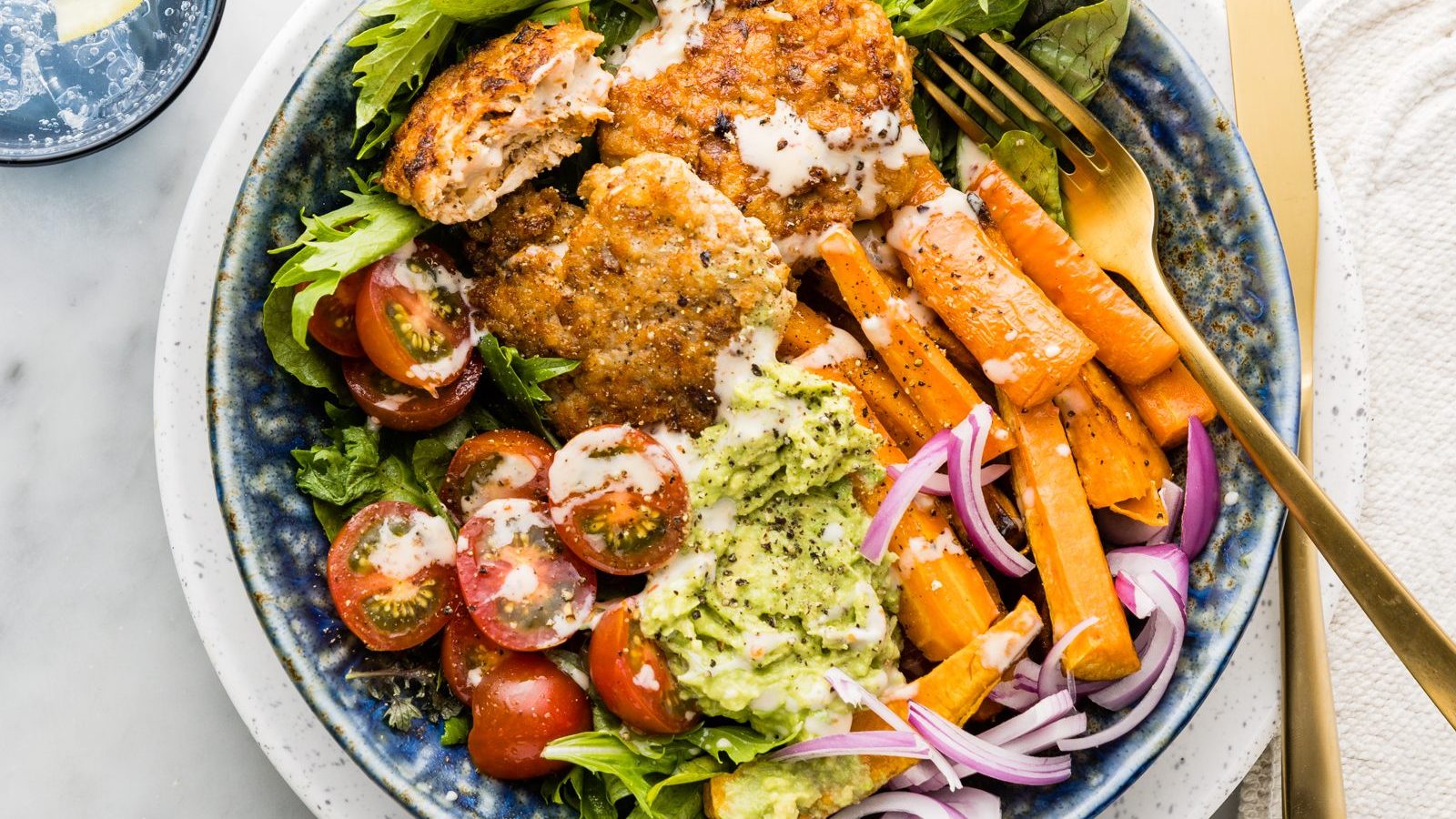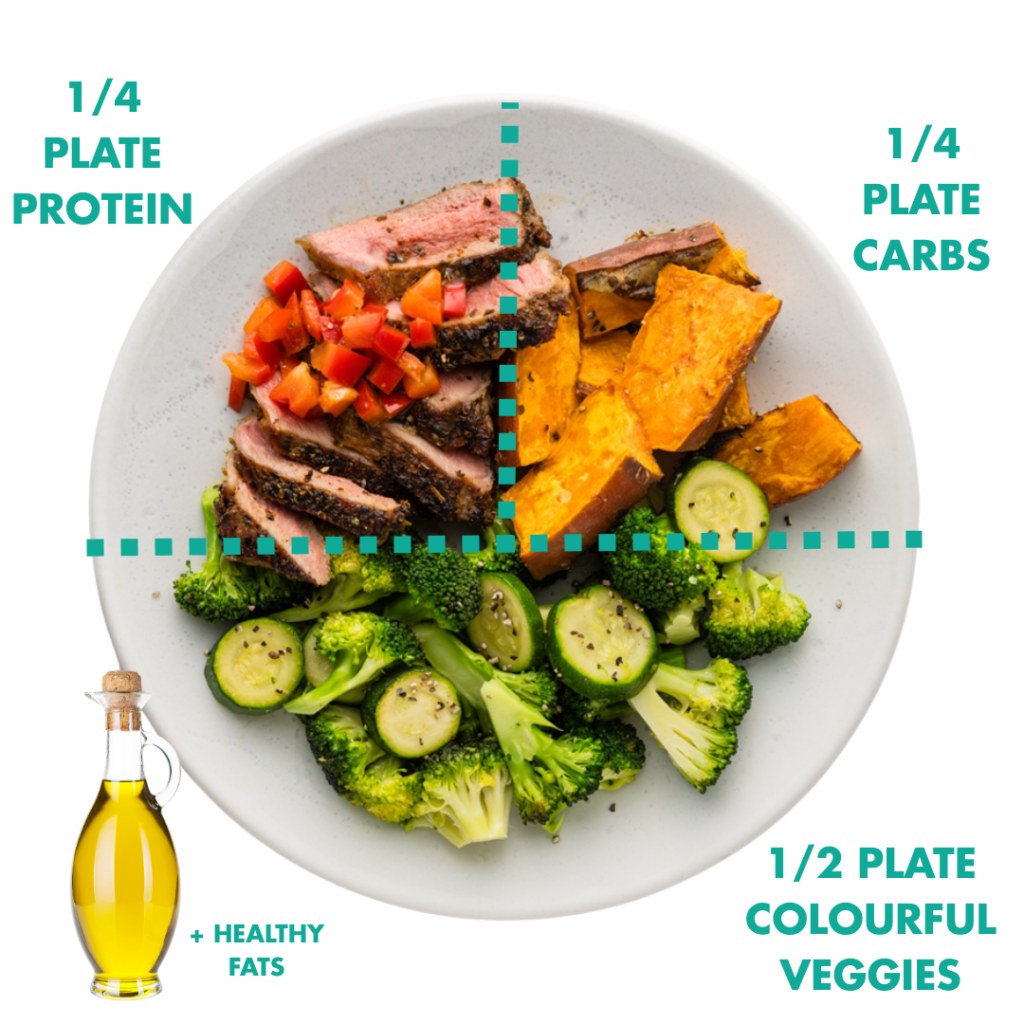We’ve all heard that healthy eating is all about “balance” or “everything in moderation.” But what does that look like on your plate? How do you take those big-picture ideas and turn them into satisfying meals that keep you energised and on track? If you find yourself reaching for snacks not long after eating, or hitting an energy dip later in the day, it’s a sign your meals are not as balanced as they could be. The good news is that a few simple tweaks can make a big difference.

Why Balance Matters
Every meal is an opportunity to give your body the fuel it needs. When you include the right mix of foods, you are more likely to:
- Stay fuller for longer: pairing foods containing protein and dietary fibre together helps to slow down digestion and keep you satisfied
- Maintain steady energy: balanced meals provide a sustained release of energy, keeping you focused and fuelled for longer.
- Support overall health: combining a variety of foods each day ensures you are getting a wide range of nutrients to help your body thrive
Think of your plate as your foundation. When it is well balanced, you will feel more energised, nourished, and less likely to graze or overeat later on in the day.
4 Steps to Building a Healthy Plate
A simple way to bring balance to life is by cooking and serving up your meals in the following way (1).
At each main meal, aim for:
Step 1
½ a plate of colourful vegetables or salad: rich in dietary fibre, vitamins, minerals and phytonutrients (plant chemicals) to keep you nourished and your digestion on track
Step 2
¼ plate of lean or plant-based protein: such as meat, chicken, fish, eggs, or tofu to keep you feeling satisfied and to support muscle health
Step 3
¼ plate of wholegrains, starchy veg or legumes: like grainy bread, brown rice, kūmara/potato (skins on), wholemeal/pulse pasta or chickpeas for dietary fibre and sustained energy
Step 4
Add a small serve of healthy fats: such as olive oil, avocado, nuts or seeds, to add flavour and support heart and brain health

Putting it into Practice
Balanced meals do not have to be complicated. Here are a few everyday examples showing you how you can combine foods and build a healthy plate:
Breakfast
Two poached eggs (protein) on wholegrain toast (carbs and dietary fibre) with a side of spinach and mushrooms (veggies and dietary fibre), topped with avocado (healthy fat)
Lunch
Grilled chicken (protein) with brown rice (carbs and dietary fibre), a big mixed salad (veggies and dietary fibre), and a drizzle of olive oil (healthy fat)
Dinner
Lentil curry (protein, carbs and dietary fibre) with kumara (carbs) and a side of steamed broccoli (veggies and dietary fibre).
A Fresh Start to your meals
Start serving you meals using the healthy plate as your guide and see how it makes you feel.
You could start with breakfast or a meal you have often. Notice your energy levels in the afternoon, how satisfied you feel after eating, and whether any cravings at night or in the afternoon reduce or change. Often, making conscious effort to build this as a new habit can make the biggest difference.
Key takeaway
Balanced meals = better energy, greater satisfaction, fewer cravings. Your plate is your foundation. Build it well, and the rest of your reset will follow.

References:
(1) Harvard T.H. Chan School of Public Health. The Healthy Eating Plate. Available at: https://nutritionsource.hsph.harvard.edu/healthy-eating-plate/

